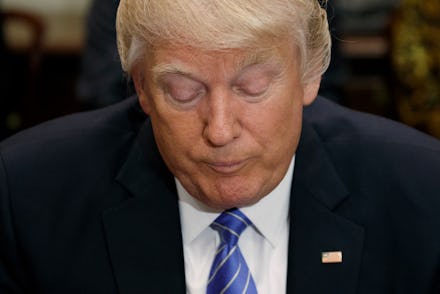Here's how the presidential chain of command works

While Republicans are unlikely to avoid a congressional investigation into President Donald Trump's ties to Russia, Democratic congressional candidate Boyd Roberts already filed paperwork to the Federal Election Commission to create an "Impeach Trump Leadership" super PAC.
Meanwhile, a Feb. 2 poll by Public Policy Polling found that 40% of registered voters want Trump to be impeached, and 52% long for the days when Barack Obama occupied the Oval Office.
If Trump is removed from office, who would be the next president?
When Franklin Roosevelt died in 1945, Vice President Harry S. Truman assumed the presidency. Two years later, Truman signed the 1947 Presidential Succession Act, which names the vice president first in line, followed by the speaker of the House and the Senate president pro tempore.
In the event of a Trump impeachment and subsequent removal from office, the chain of command would be as follows: Vice President Mike Pence, Speaker Paul Ryan, Sen. Orrin Hatch.
After the president pro tempore of the Senate, U.S. Code Title 3 grants power to the secretaries who spearhead the 15 executive departments, starting with the secretary of state — in Trump's case, Rex Tillerson.
To date, the chain of command has not gone beyond the vice president.